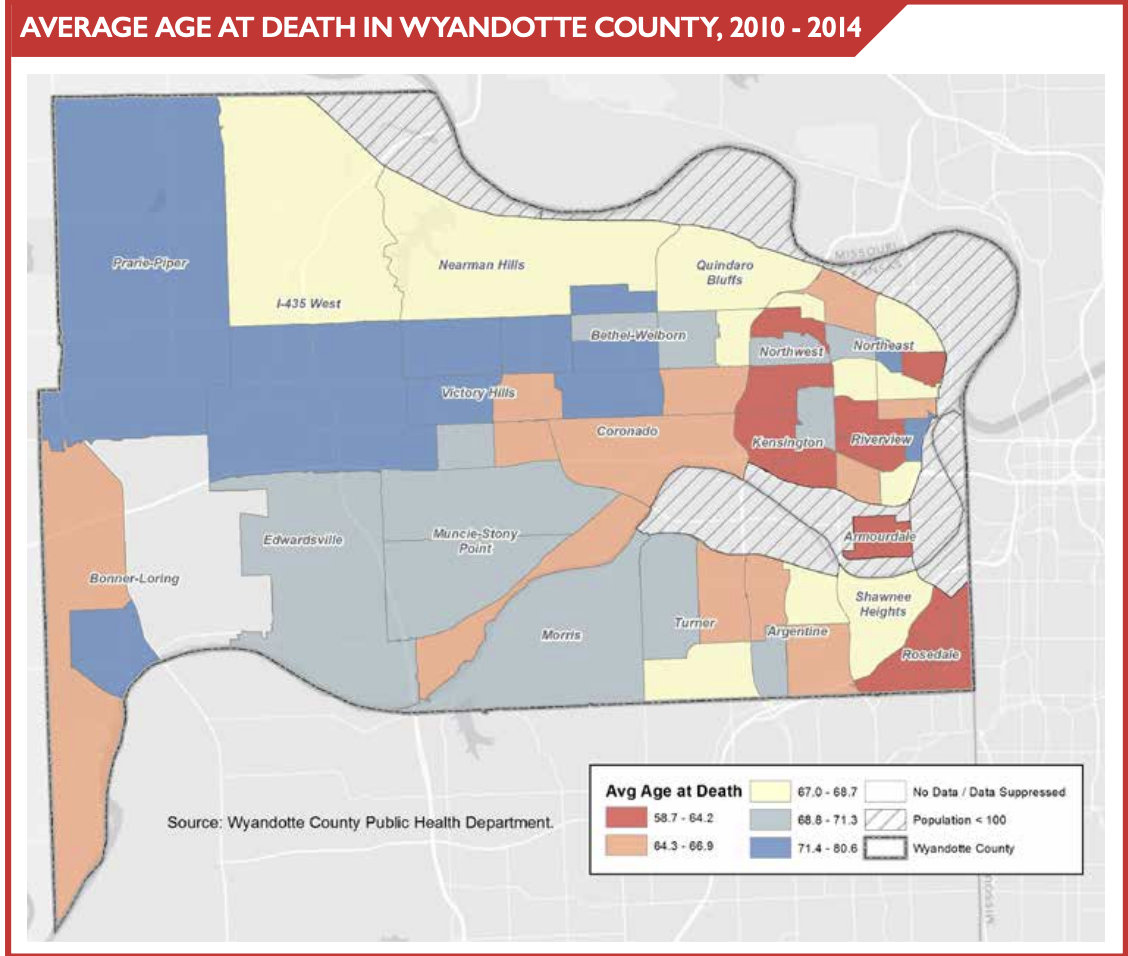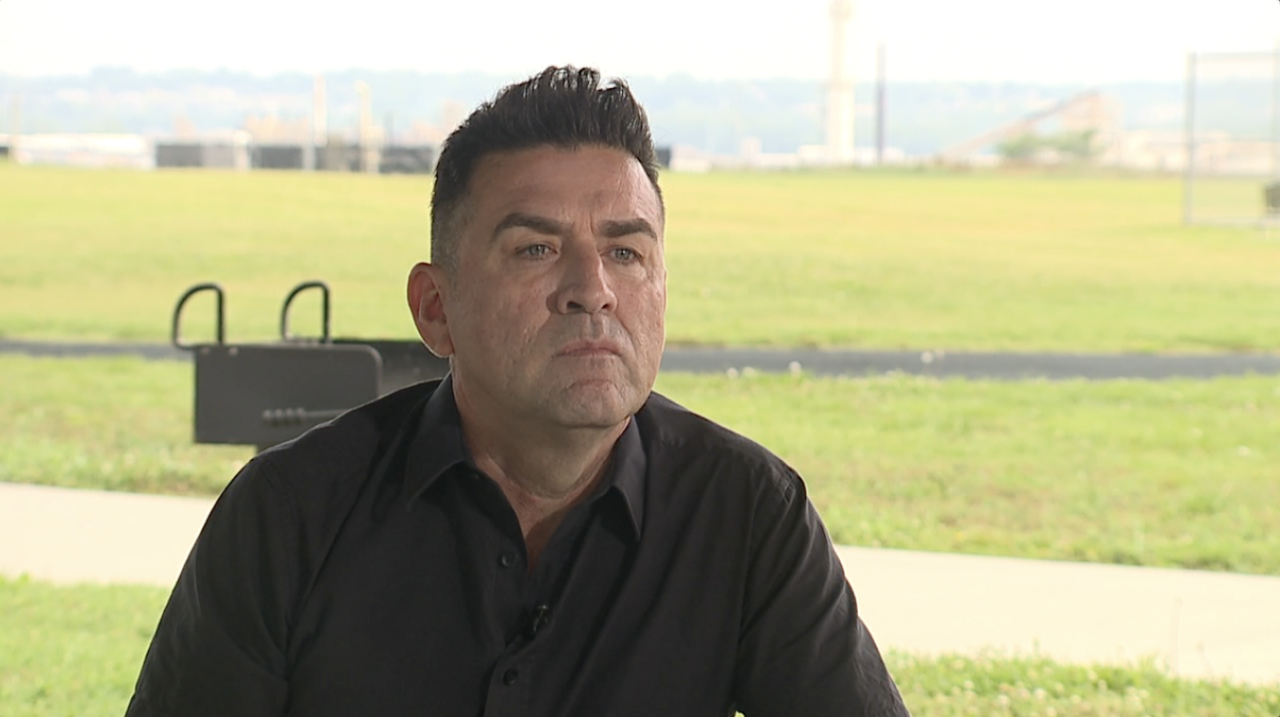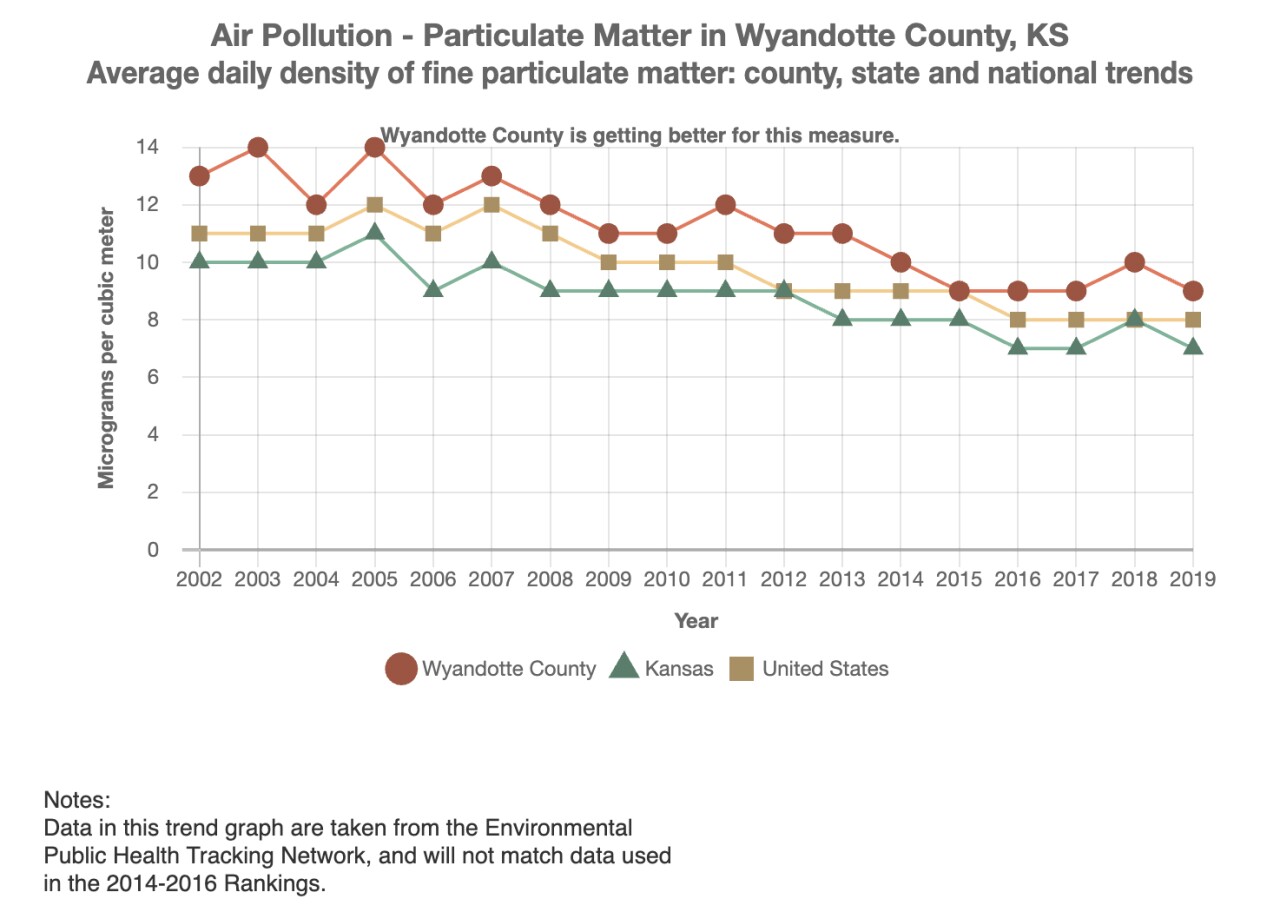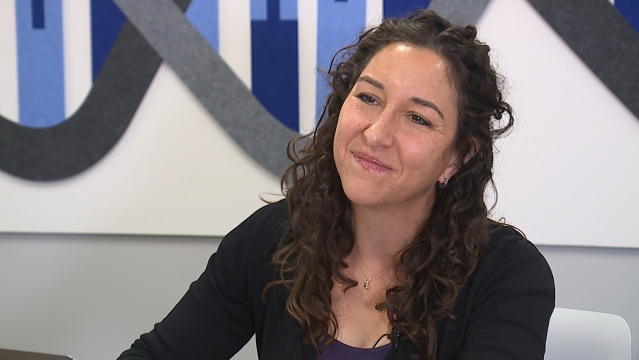ADVOCATES CLAIM THERE IS ENVIRONMENTAL INJUSTICE IN WYANDOTTE COUNTY
Editor's Note: This story is part one of a three-part series exploring environmental injustice in Wyandotte County. Part 2 covers the history of Hispanic settlement in Kansas City, Kansas. Part 3 brings in the voices of lifelong residents of KCK's Argentine neighborhood and how those residents are advocating for healthier lives in their community.
In April, CleanAirNow (CAN), a Kansas City, Kansas, environmental justice nonprofit advocating for cleaner air, led community members and federal, state and local officials on a tour of what the nonprofit considers toxic sites and environmental justice neighborhoods in eastern Wyandotte County.
The tour drove participants through historically Hispanic neighborhoods — Quindaro, Armourdale, Argentine and Riverview — that are adjacent to rail yards, scrap yards, industrial plants, Environment Protection Agency (EPA) designated Superfund sites — there are four in KCK — and previous toxic waste sites.
Since the tour, KSHB 41 has followed up with both sides of the issue. We've spoken with CAN, residents, a daycare owner in Armourdale, the EPA, the Kansas Department of Health and Environment (KDHE), a Kansas City historian and the medical director of environmental health at Children’s Mercy Kansas City. We've also reached out to others, including the KCK's Mayor's Office, who did not respond.
CleanAirNow (CAN), a community-led environmental justice organization in KCK, claims environmental racism is present in Wyandotte County, where health outcomes differ greatly from the eastern third of the county — where communities are predominately of color — to the western half — where communities are predominately white, according to a report by the Community Health Council of Wyandotte County in collaboration with the Kirwan Institute for the Study of Race and Ethnicity at The Ohio State University.

While it is evident some government entities, such as the EPA, are working closely with with CAN and are making an effort to listen to residents' concerns, one thing was made most clear: Environmental injustice isn't in the past for these neighborhoods.
A HISTORY OF DISINVESTMENT IN KCK
Some neighborhoods of Wyandotte County were redlined, and were intentionally disinvested by the Federal Home Owners' Loan Corporation between 1935 and 1940. Today, those same communities are experiencing poor health outcomes, the worst in Kansas; Wyandotte ranks last in health outcomes out of all reporting Kansas counties while neighboring Johnson County ranks first, according to the University of Wisconsin Population Health Institute.
Outside of the fact that these disadvantaged communities are encircled by pollutant-emitting rail yards, trafficways and industrial zones, residents in some neighborhoods of eastern Wyandotte County suffer from poor health outcomes, unemployment, poverty, linguistic barriers, exposure to lead-based paint, lack of insurance, high cancer rates, and the list goes on, according to a report by the Community Health Council of Wyandotte County in collaboration with the Kirwan Institute for the Study of Race and Ethnicity at The Ohio State University.

While these KCK communities suffer from being overburdened and underserved, CAN claims it's a back-and-forth game between local, state and federal entities about whose responsibility it is to enforce standing regulations.
Although, the EPA feels differently.
"We are doing compliance checks on a regular basis, that’s part of our job," said Joshua Tapp, office director of intergovernmental affairs of the Environmental Protection Agency Region 7. "We also work with the state in the local governments to do that as well, but with the current administration, environmental justice is a priority, so we look for those communities like this community here in Argentine and Armourdale, that potentially have some worrisome environmental burdens, and we try to focus some inspections in those areas."
Tapp was on CAN's tour in April.
"The tour was actually a wide variety of sites," he said. "So, we got a chance to take a look and there were some sites that we saw that were concerning to me. And so my commitment to the CleanAirNow folks that put on the tour, was to go back to the office and do some research."

And, so, that's what the EPA did.
THE EPA INVESTIGATES POTENTIAL POLLUTION BUILDUP AT A KCK DAYCARE
Tapp said he saw smoke from a metal scrap yard potentially crossing a fence line, which would be a violation, and also followed up with Ivonne Guitierrez, whose Armourdale daycare was a stop on the tour. The EPA found dust deposits on the outdoor playground equipment at her daycare, and since the tour has conducted tests on the deposits.
Proximity to industrial zones, trafficways and rail yards leaves Guitierrez concerned about the dust and the potential health hazards it could cause for the children she cares for, who predominately come from low-income Spanish-speaking households. Test results are expected be finalized by the end of October, according to an EPA spokesperson.
Currently, the EPA has five identified businesses in Wyandotte County that have significant violations, for everything from water contamination to emitting different types of chemicals. And when the EPA does fine businesses around these "fenceline" communities for violations, they make it clear to violators that these communities are already subject to high levels of air pollution, "including higher than average levels of diesel particulate matter, and socioeconomic burdens."
Beto Lugo-Martinez, the co-executive director of CAN, said he does appreciate the EPA's compliance inspections of these businesses.

A FOCUS ON DIESEL PARTICULATE MATTER
High levels of diesel particulate matter is what concerns CAN and some residents, including Guitierrez and lifelong Argentine resident Amanda Devriese-Sebilla, the most. Both women advocate with CAN for cleaner air in their KCK communities.
KDHE says Wyandotte County meets federal National Ambient Air Quality Standards and works with the Wyandotte County Public Health Department to perform regular inspections of facilities within the county.

Data from the CDC's Environmental Public Health Tracking Network shows that while Wyandotte County's average daily density of fine particulate matter has decreased over the years and brought within the EPA's primary annual average standard (12.0 micrograms per cubic meter), most recent data — from 2019 — shows it remains above Kansas' and the country's averages.
Dr. Elizabeth Friedman, the medical director of environmental health at Children's Mercy Kansas City, says CAN's focus on particulate matter is valid.

"And being near the rail yard, where we have a lot of both trains and diesel trucks, transporting goods to and from their ports, a lot of that ultra-fine particulate matter is produced. And the reason that the ultra-fine is so, so concerning is that, can I show you a picture?" she said.
She presented an infographic from the University of Southern California, which shows the short-term — headaches, runny nose, itchy throat, coughing, painful breathing, pneumonia, bronchitis, premature birth, itchy skin — and long-term — headaches, anxiety, memory issues, strokes, heart disease, heart attacks, smaller lungs for life, lung cancer, asthma, liver and blood problems, issues with the ability to have children and high blood pressure — effects of exposure to such air pollution.
A 2022 study involving Children’s Mercy Kansas City, the University of Missouri Kansas City and the Union of Concerned Scientists found that “asthma disproportionately affects the health of BIPOC Kansas City pediatric patients.”
The study, which focused on pediatric patients in Kansas City, further found that historical redlining and racism seemingly correlates with asthma morbidity in the metro area, and specifically found that children living closer to highways, rail yards and TRI (Toxic Release Inventory) facilities have greater risk of asthma exacerbation and/or more often seek acute care for their asthma.

AIR MONITORING IN KCK
Air monitoring stations show what pollutants and how much of those pollutants are circulating on any given day. While the EPA can't make regulatory decisions based on CAN's comparatively more localized air monitors, the EPA does look their data.

CAN claims their air monitors fill gaps for areas the EPA's monitors aren't in proximity to.
Tapp explained that across the 3,000,000 square miles of the United States, the EPA has funded 4,000 monitoring stations, which on average equates to one monitoring station every 750 square miles.
"So there’s no way for us to cover every single place in every single community, and that’s where the CleanAirNow monitoring comes in," he said. "They can set up several locations across their communities that they are representing and collect data that is more local in nature, and very informative in terms of what it has to say."
WORKING TOWARD A BETTER FUTURE
Tapp called CAN's initiatives "community science," which he says facilitates the EPA's ability to sit down with the community, look at their data, talk about what the community sees versus what the EPA sees and how to move forward. In addition to sitting down with the community and attending the CAN tour, Tapp says the EPA is conducting compliance inspections at facilities CAN is most concerned about.
CAN has notified local, state and federal entities of their six recommendations to reduce diesel pollution in KCK: create specific truck routes to avoid residential areas, require zero emission trucks, prohibit trucks from idling, begin working toward zero emission facilities in Armourdale, The General Plan should prioritize zero emission fleet vehicles, electrify new and existing warehouses to operate zero emission yard trucks and forklifts.
"To be honest, the way that they have listed those concerns out, most of them are beyond the EPA’s authority," Tapp said. "But, we’re happy to provide data and discussions about the impacts of poor air quality on human health and encourage or incentivize local measures to be put into place."
KDHE said of those six recommendations, it passed the Idle Reduction Rule that went into effect in 2010. The rule was implemented after the EPA discovered certain ground-level ozone pollutants can affect people at lower levels than previously understood prior to 2009.
While KDHE, Wyandotte County and the EPA say they work together to ensure health standards are met in the county, CAN advocates alongside the residents who work, play, learn and live there, hoping to set new standards and provide the community with a better future than its past.
—
Reporting on this series was made possible through a collaboration of KSHB 41 Digital Reporter Lily O'Shea Becker and KSHB 41 I-Team anchor Caitlin Knute. The series incorporates months of interviews, tours, site visits and research. You can contact Lily at lilyoshea.becker@kshb.com and Caitlin at caitlin.knute@kshb.com.






